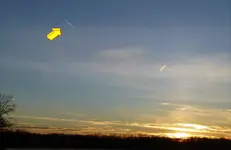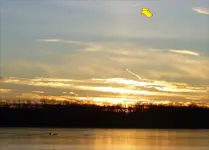As I said, that BLM document was an Instruction Memorandum (ie policy guidance) and I did specifically say that it was NOT legislation. This was the first time that BLM went into print in a (largely failed) attempt to clarify the position as they saw it. Although it has expired on paper, the problem with these kinds of guidance documents is that they often continue to be used as guidance in some areas in the absence of anything more definitive.
Most state laws assert that a meteorite find belongs to the landowner of the land upon which the meteorite was found. Many state courts have interpreted their laws as granting the state sole title to any meteorite recovered on state-owned lands. Laws regarding recovery of meteorites on federally owned public lands is ‘unsettled’ but the federal government has historically asserted title to all LARGE meteorites (without a proper definition of ‘large’) found on federal land, because:
- the meteorite is the property of the federal government (as the landowner)
- meteorites found on public lands are subject to the 1906 Antiquities Act (16 U.S.C. 432)
- a meteorite does not qualify as a “valuable mineral” as defined under the 1872 Mining Law, and thus it is not subject to mineral claim rights that could otherwise be filed by the discoverer.
The law is ambiguous regarding ownership of meteorites found on public lands that are managed by the Bureau of Land Management (I did not say that BLM owned such lands). Some BLM offices consider meteorites to be artifacts, and thus regard them as government property, but the vast majority of BLM offices do not.
In the case of SMALL meteorites (without a proper definition of ‘small’), ownership of those found on federal land is not covered in the Code of Federal Regulations. These kinds of ambiguity are the reasons why BLM attempted to clarify their own position in their 2012 Instruction memorandum. BLM has also argued in the past that they have the same legal standing as a private landowner and that, under the 1906 Antiquities Act, all meteorites found on BLM land belong to the Smithsonian Institution.
It’s a mess. You’re always in a more secure (or at least less contentious) position if you hunt on privately-owned land which is either yours or for which you have landowner permission.
If you can provide links to any documentation that further clarifies today’s position it would be appreciated.
This is a common misunderstanding about meteorites. The law is not ambiguous. Meteorites of any size belong to the entity that owns the land. If it falls on your property it's yours. Lots of State law, common law as well as court decisions over many years make this the same in every state.
There is no law or case stating that "all meteorites found on BLM land belong to the Smithsonian".
There is nothing in the Antiquities Act, federal law or a court case that determine "meteorites found on public lands are subject to the 1906 Antiquities Act (16 U.S.C. 432)" That's an internet myth.
The
Willamette Meteorite case is a good starting point for understanding this basic premise of these laws and it's usually one of the cases relied on by other State court opinions. The Willamette meteorite was "discovered" in November 1902 and the Oregon State Supreme Court settled the ownership of meteorites issue by July 1905. It didn't take them long because it was a no-brainer under the law. Lot's of earlier and much more recent cases stating the same thing. Here's one from the
Iowa Supreme Court in 1892.
As far as meteorites found on public land there is no federal law nor any federal case law that even approaches the subject of meteorite ownership. None - there has never been a case where such a determination was needed. The federal laws on rock and mineral ownership are extremely well developed and all federal courts have settled cases regarding rock and mineral ownership. This was true long before meteorites were even known to exist.
The courts and federal land management agencies have always treated meteorites just as they do any other rock or mineral. Just like other rocks found by the casual public land user you may collect up to 10 pounds per year for your own use. As a casual user you can't sell or trade what you found whether it's a pretty rock, some dirt or a meteorite. If you want to specifically collect meteorites from the public lands and sell or trade them you will have to obtain a permit. Just like any other common stone, soil or mineral found on the public lands you can't just take the people's public property for profit without paying for the privilege.
You are right. "A
meteorite does not qualify as a “valuable mineral”. (emphasis mine)
IF a meteorite is large enough and it's
minerals are valuable a citizen has a right make a mining claim based on the mineral content. You can not make a mining claim for a meteorite itself, you can only make the mining claim based on the mineral value left in the meteorite. Then you can mine the mineral content and patent the land. Very well settled law.
I think that where these misunderstandings come from is partially due to the fact that people see a meteorite as more than just part of the rock that makes up the physical mass of the earth. In the law once that meteorite strikes the ground and stops moving it's just another rock on someone's property. And really, other than the imagination of those who seek meteorites, is there any difference from the rest of the rock and soil we stand on? The law doesn't see any difference no matter what our current level of interest might be.








